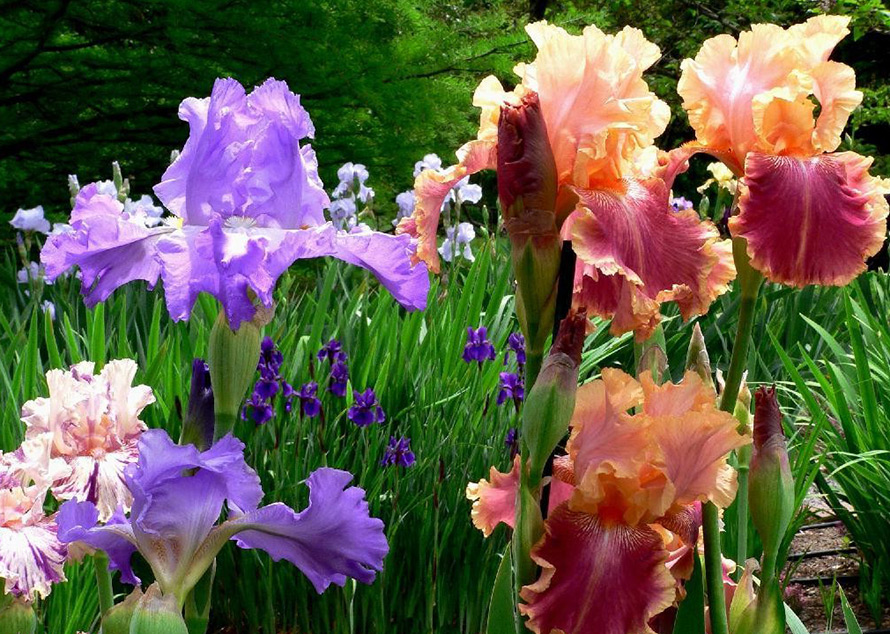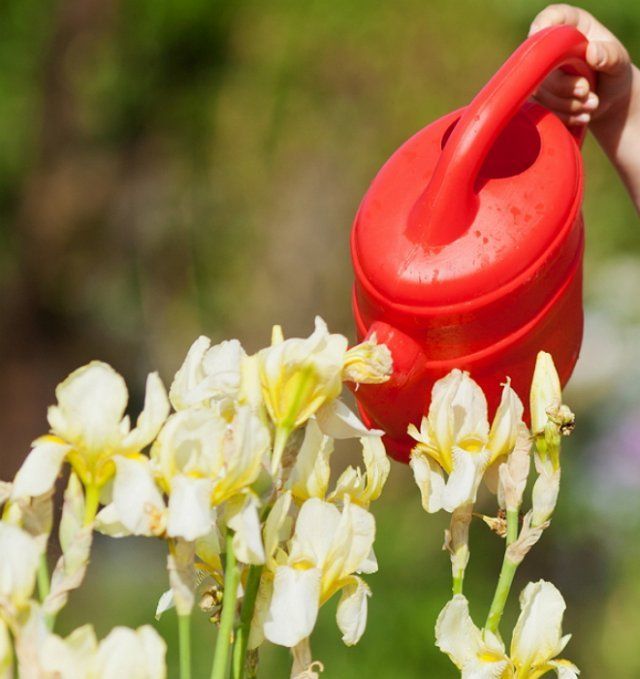Content:
Blooming irises are an incredible sight. They are so beautiful and diverse that they fascinate the eye with their bright and elegant flowering.
When and how long does iris bloom
Iris bloom begins in late spring and lasts only a few days.
Depending on the variety, the plant produces from one to three buds, which bloom for only two days, and on cool days retain their decorative effect from 3 to 4 days.
In order for iris flowers planted in a flower bed or in a flower garden to delight with their delicate buds for a longer time, many experienced flower growers advise placing different varieties of blooming irises with different flowering periods nearby. In this case, you can extend the flowering period of different varieties of irises until the very end of the last summer month.
Why transplant irises after flowering
Growing luxurious iris flowers is not difficult at all and is available even to a novice florist. Therefore, the interest in the question is quite understandable: when to transplant irises after flowering and what care must be provided for the friendly flowering of transplanted plants.
A growing bush of irises quickly overgrows with new tubers of rhizomes, which, as they grow, begin to protrude from the ground. In place of a compact plant, real thickets appear, flowering slows down or stops altogether, and the plant loses its visual appeal.
This is due to the fact that irises belong to the species of rhizome perennials, and in winter the terrestrial green mass dies off. The root part, together with the axillary replacement buds, is in a state of winter dormancy. The warm and sunny weather of the first summer months promotes the formation of young shoots, and the active formation of flower rudiments of irises begins, from which new flower stalks are formed. To do this, it is recommended to transplant new bushes with a minimum amount of green mass of at least 8 leaves. Knowing these agronomic subtleties, you can grow a flowering plant in the coming season.
When to replant irises after flowering
To choose the time when to transplant irises after flowering, it is recommended to familiarize yourself with the peculiarities of the growth of perennial irises. In one place the iris plant normally "lives" only up to five years, after which the irises must be planted. This is due to the fact that over time the rhizome grows, it is so overgrown with new "potatoes" of the roots that the oppression of new root formations by the old occurs.
The optimal time for transplanting is July, when, under the influence of the summer heat, the plant slows down its development and plunges into summer hibernation. If for some reason it was not possible to transplant iris flower crops immediately after flowering, then you can postpone their transplantation until autumn.
Irises need proper and good care after transplantation.Regardless of which transplant method is chosen, the reward for patient and painstaking work will be the flowering of a luxurious color range of rainbow flowers - unique irises.
Iris transplant after flowering
The correct transplantation of iris plants is carried out according to the following scheme:
- Digging up a bush. For this purpose, it is not recommended to use an ordinary shovel, which can damage the delicate root tubers of irises. It is better to use ordinary garden forks, then the digging procedure will be more gentle and will not damage the plant's root system.
- Cleaning tubers. The excavated rhizome is thoroughly cleaned of soil residues, in case of heavy pollution, rinse with water.
- Inspection and removal of dried or diseased leaves.
- Shortening the root. If the roots of the plant are too long, they are shortened to 7-10 cm.
- Trimming the green fan. Using a sharp garden cutting tool, trim the leaves to a maximum length of 15 cm.
- Dividing the "parent" bush with the rhizome into different parts.
- Disinfection of cuttings. A weak "pale pink" solution of manganese is prepared, the root of the prepared bush is dipped into it.
- Slicing processing. Places of cut leaves or roots are sprinkled with charcoal or activated carbon powder. Processing of sections with ordinary pharmacy brilliant green is allowed.
- Separated specimens are dried in the open air.
To stimulate the formation of new roots, it is recommended to treat the rhizome with growth stimulants. The separated bushes must be planted in pre-prepared planting holes filled with a nutritious earthy mixture. The roots of the plant are neatly and evenly distributed in the hole and pressed to the ground.
According to experienced florists, experts in all the intricacies of cultivating iris flowers, the most optimal planting scheme is the orientation of plants along the points of the vertices of an equilateral triangle. Plants are planted at intervals of 30 to 50 cm.
After planting, a new bush is watered, after 3-5 days the procedure is repeated. The rate of watering is from 5 liters per iris bush. The plant must be watered at least once a week.
So that the hot sun does not harm the seedling, it must be covered from the scorching rays with a temporary shelter made of non-woven agrotechnical material, such as agrofibre.
Tips from experienced florists
Blooming irises are remembered for their bright colorful bloom and are considered a real decorative decoration of any garden or flower garden.
In the successful cultivation of new bushes of flowering plants, advice and recommendations from florists with many years of experience in breeding this flower culture will help:
- Irises should be planted in well-lit sunny places in a summer cottage or garden area. Among the wide variety of this flower culture, there are varieties that are allowed to be planted in the shaded part of the garden or summer cottage with good ventilation.
- Some iris species grow so much in the fourth or fifth year that they begin to suppress neighboring plants. Such specimens can be divided into parts without digging up. For this, part of the roots with shoots is separated with a garden shovel and transplanted to new places.
- Landing sites are prepared in advance. The soil is dug to a depth of 20-30 cm and the earthen mixture is enriched with peat and sand. If the soil at the planting site is too acidic, then liming of the soil is necessary. Sulfur powder is added to clay soil a year before planting in an amount of 1 kg / 10 m². It is brought into the ground to a depth of 10 to 12 cm.
- For iris flowers, it is not recommended to use organic fertilizers, which cause rapid decay of the delicate roots of the plant.When replanting in autumn, you should not use nitrogen fertilizers, which can cause unwanted growth of the green part of the plant before the coming winter.
Irises are considered one of the most unpretentious "inhabitants" of the garden, and their cultivation does not require any special agricultural techniques. Regular replanting will ensure the lush bloom and delicate aroma of these amazingly beautiful plants.

















